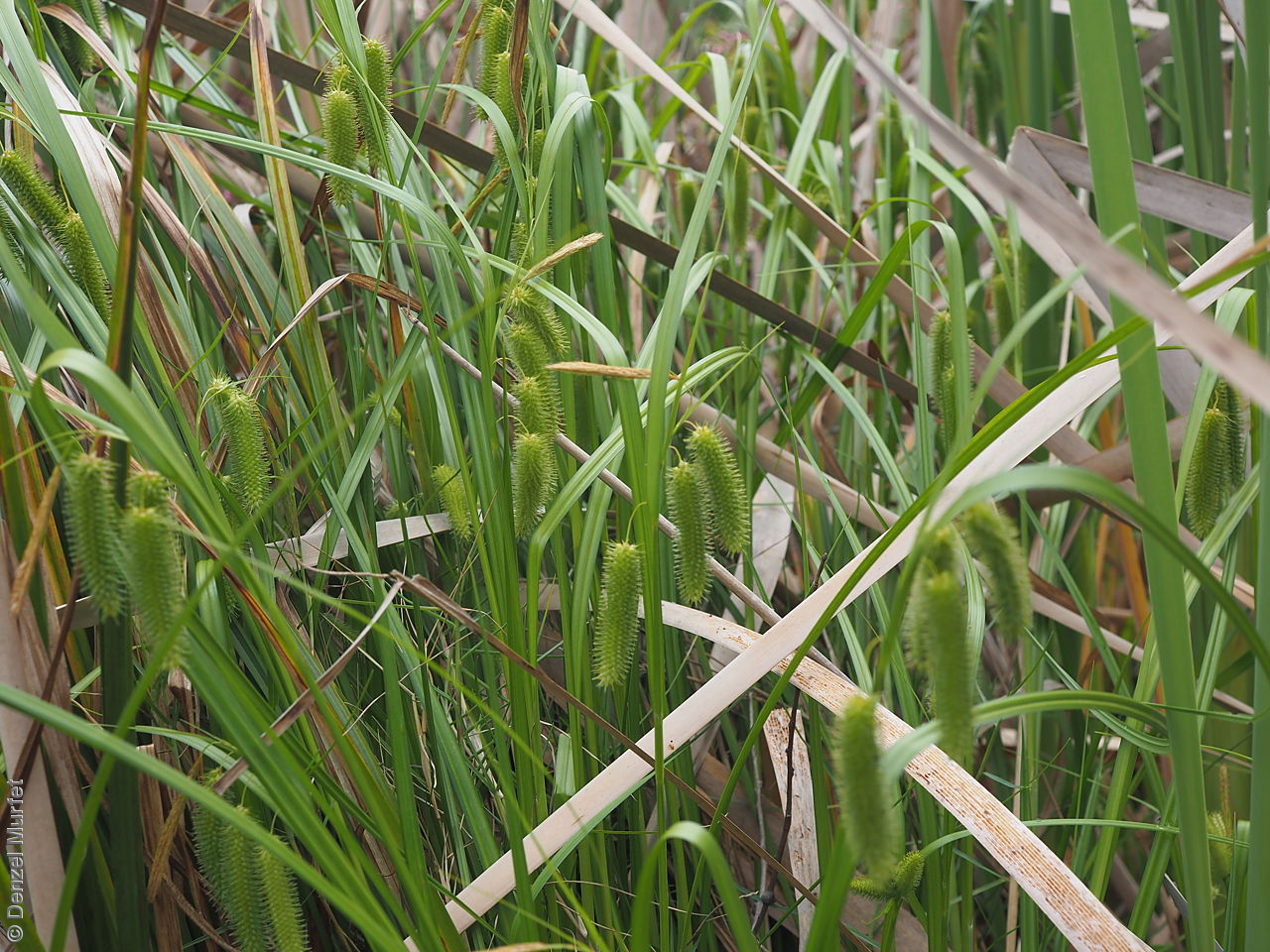
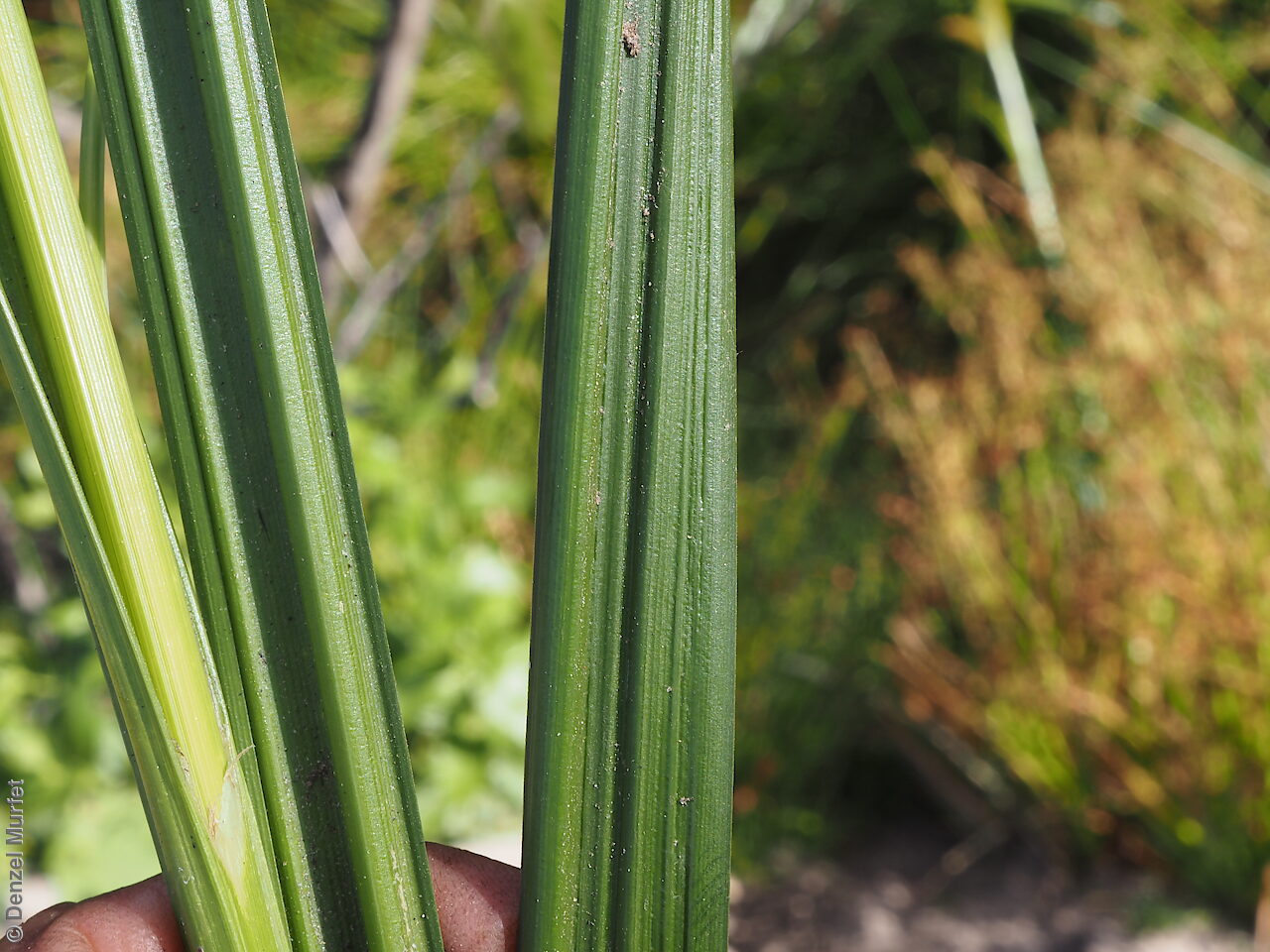
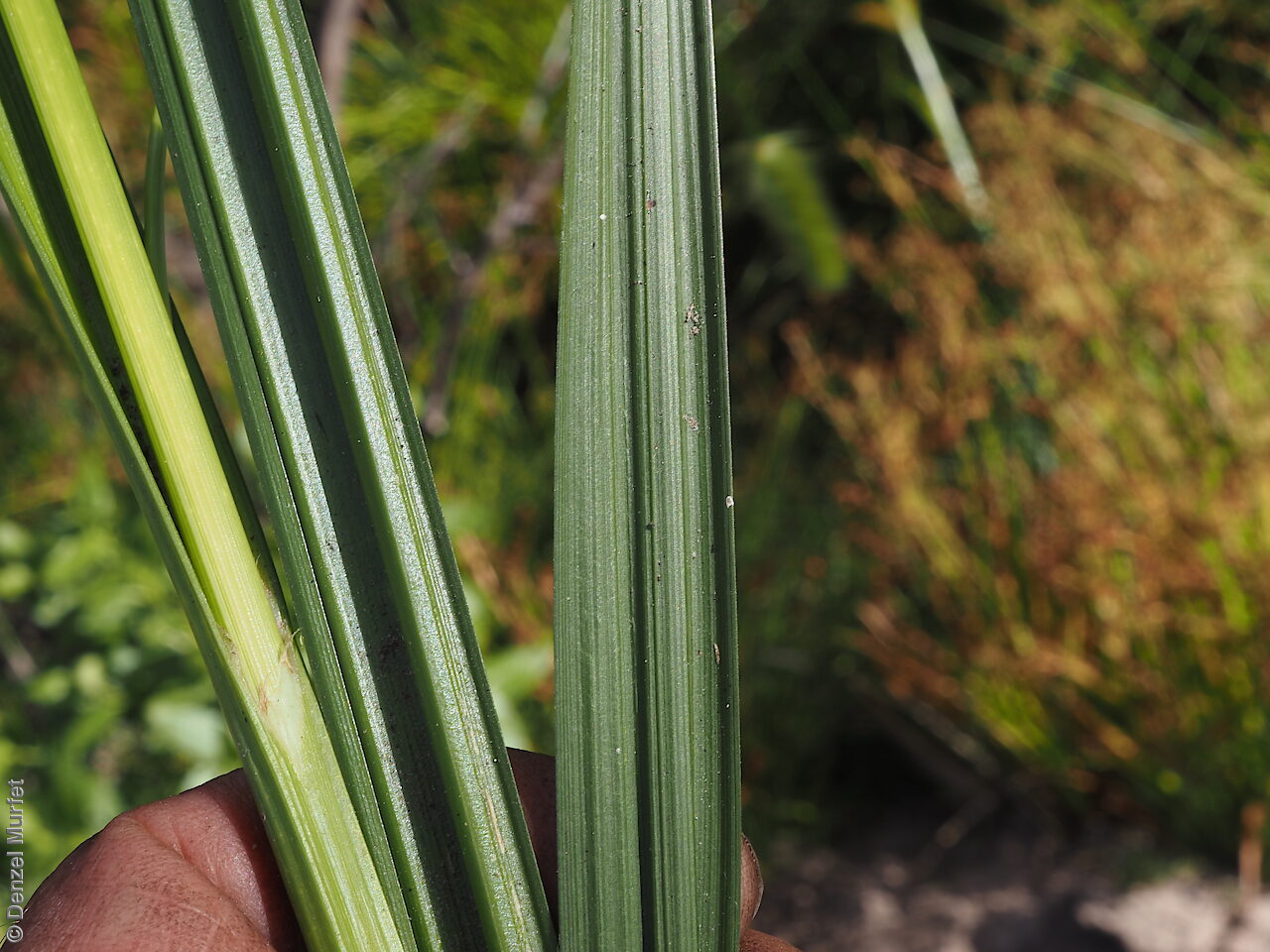
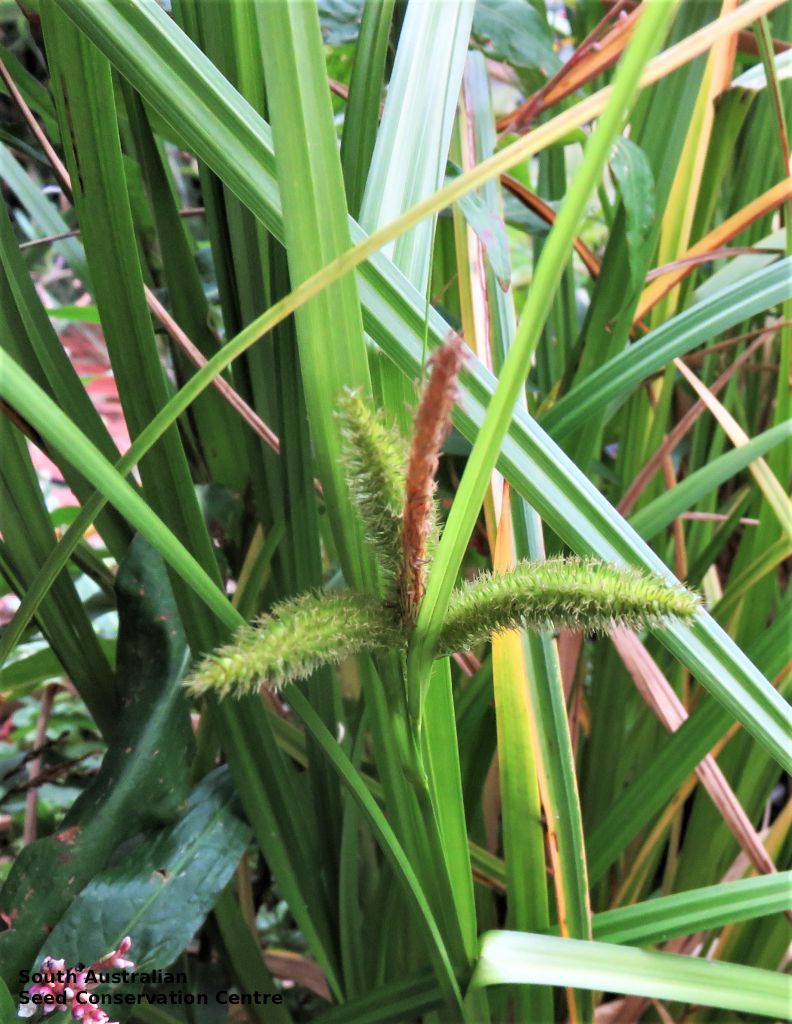
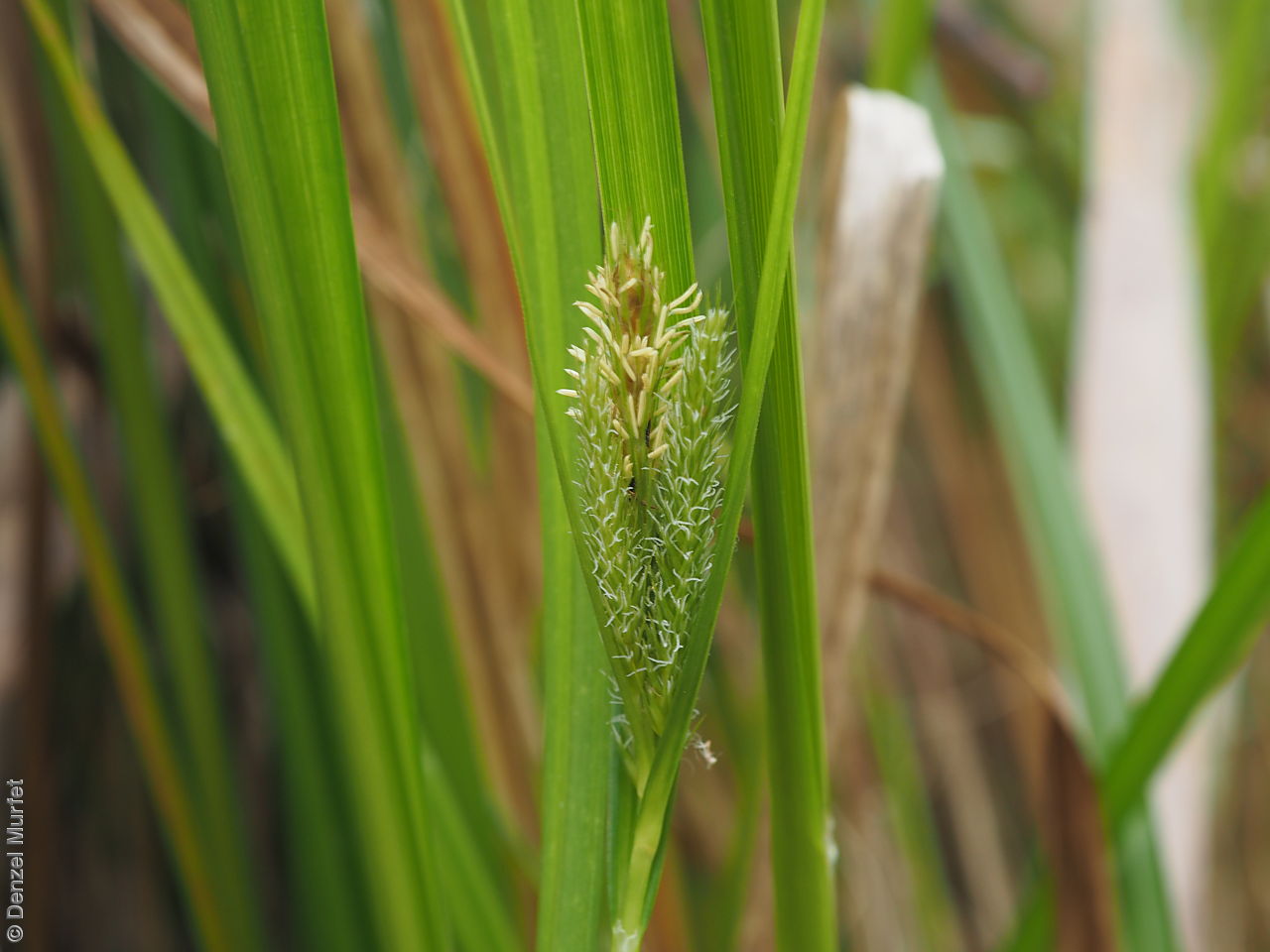
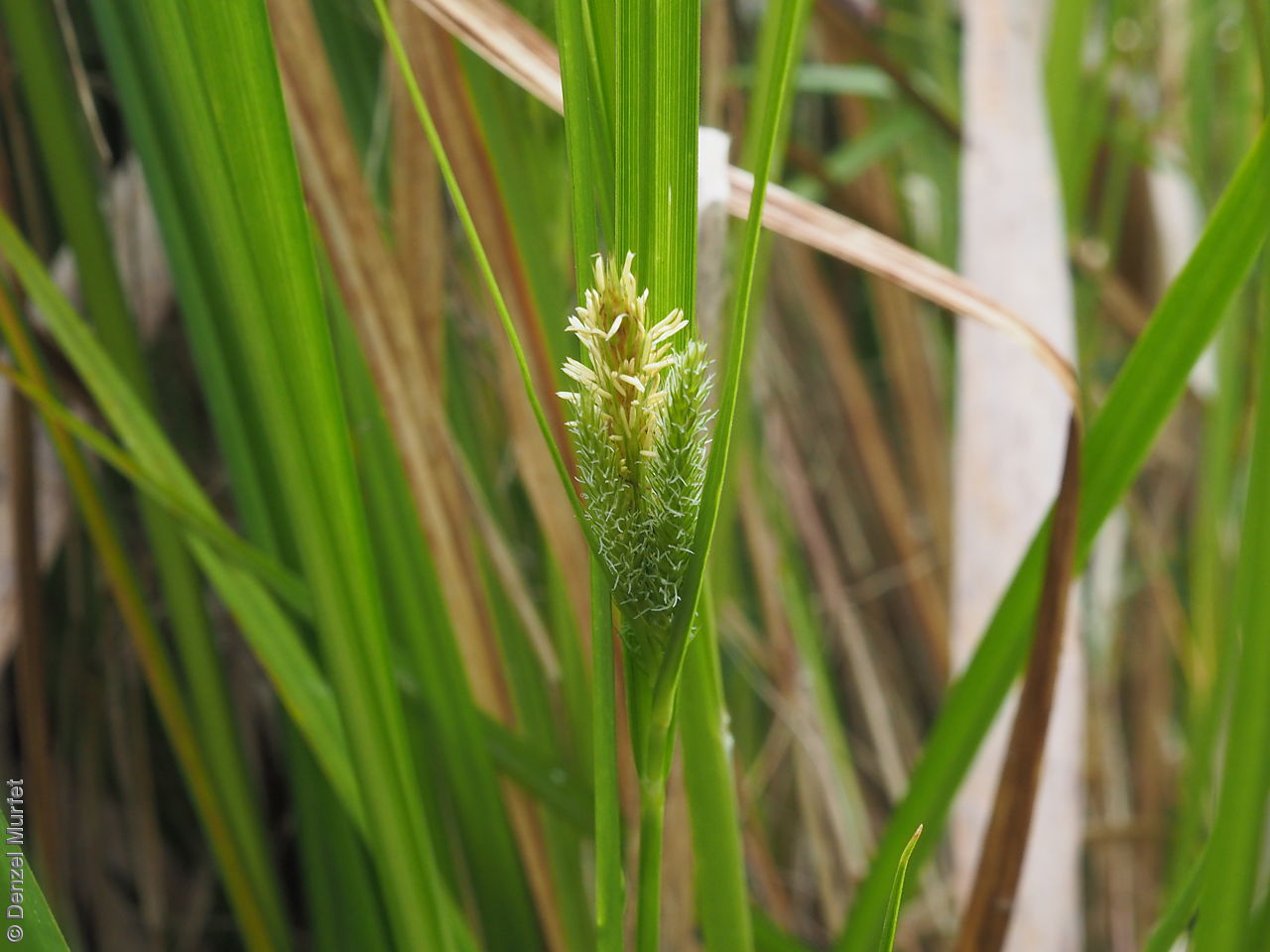
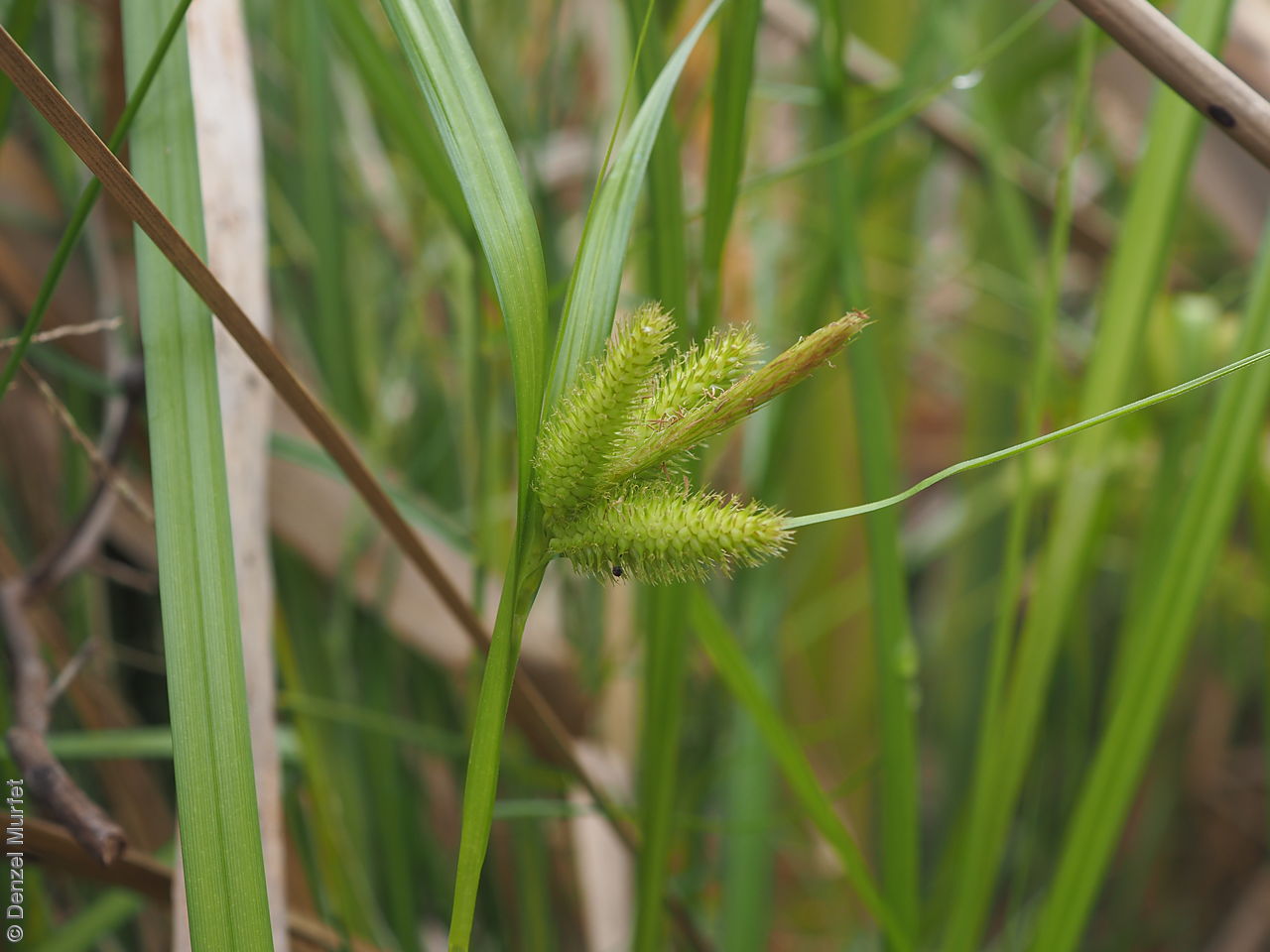
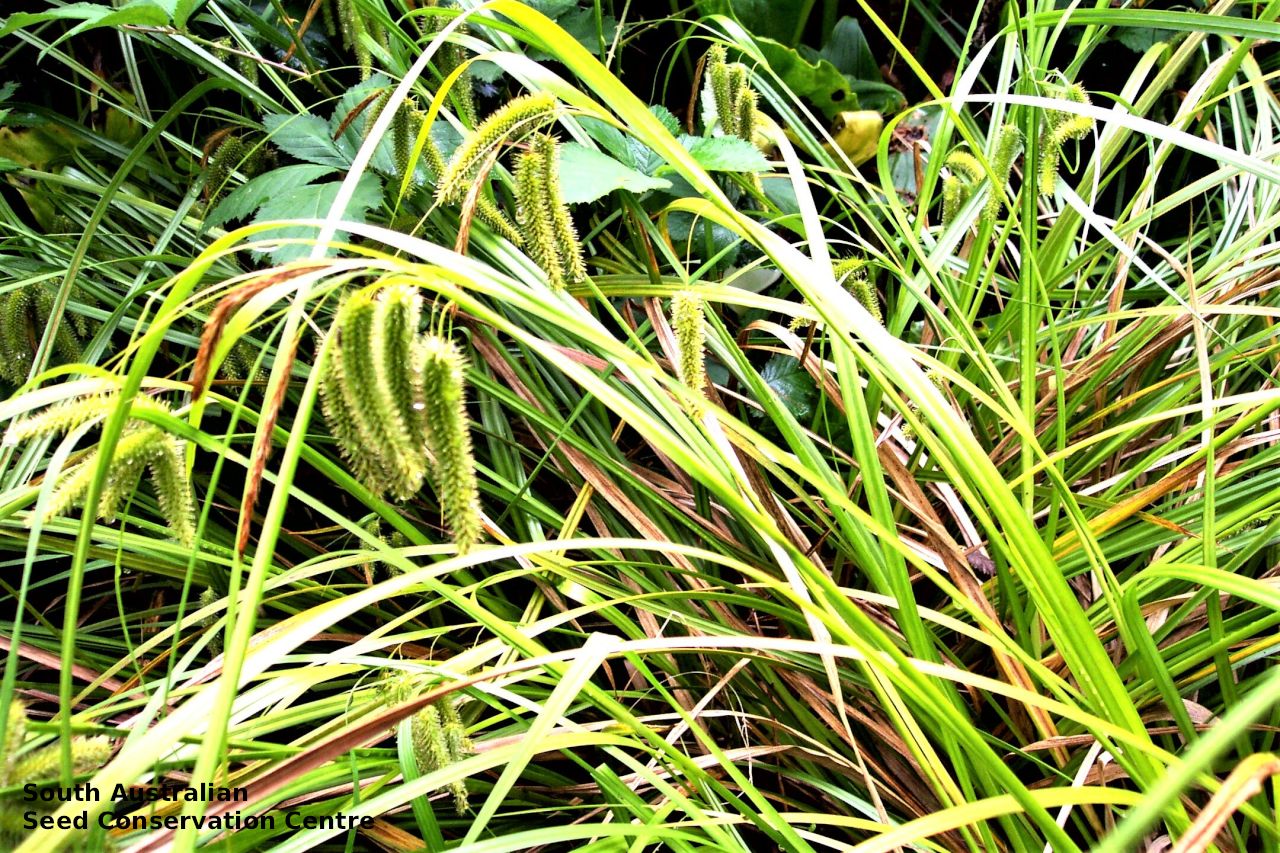
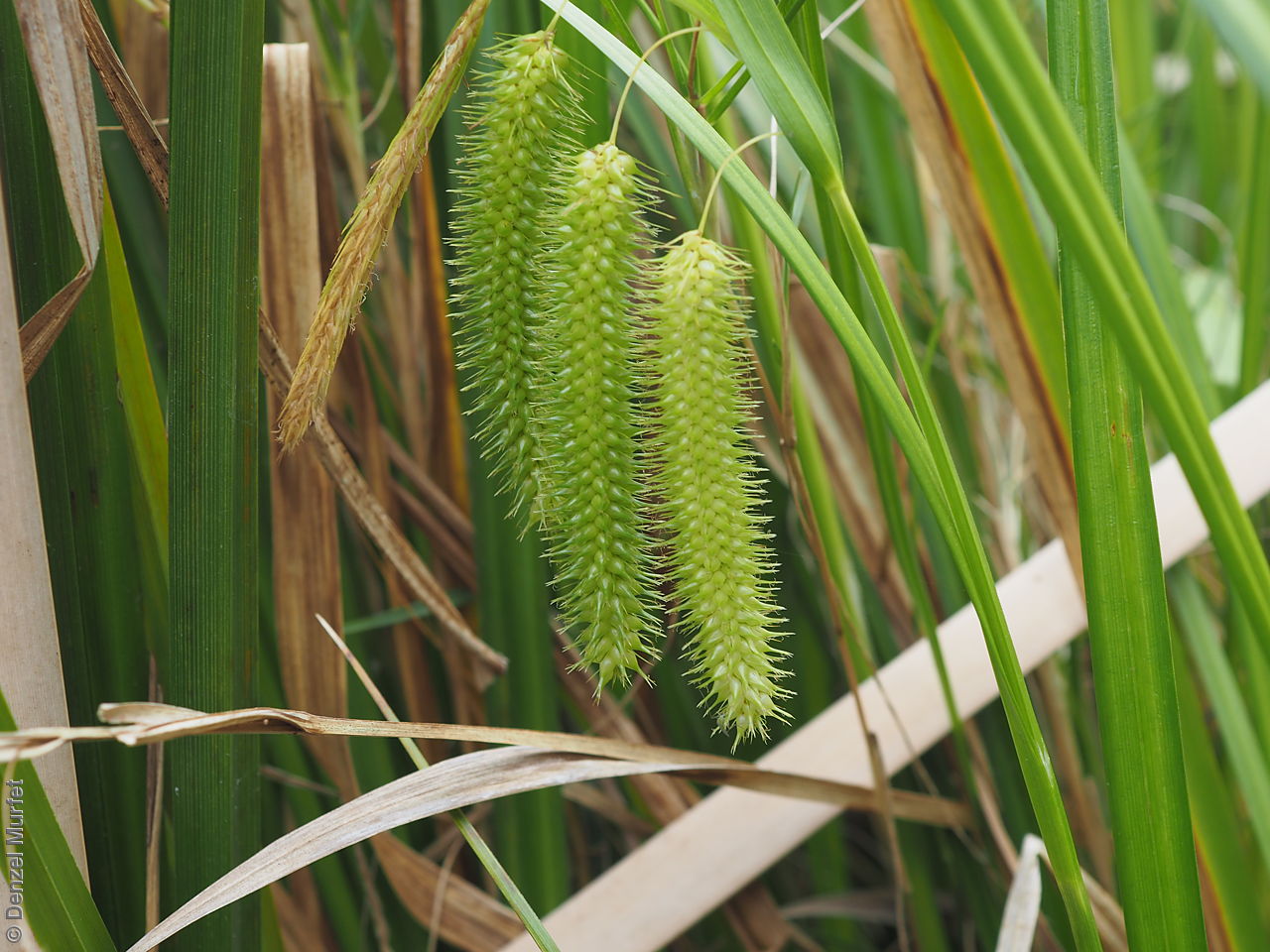
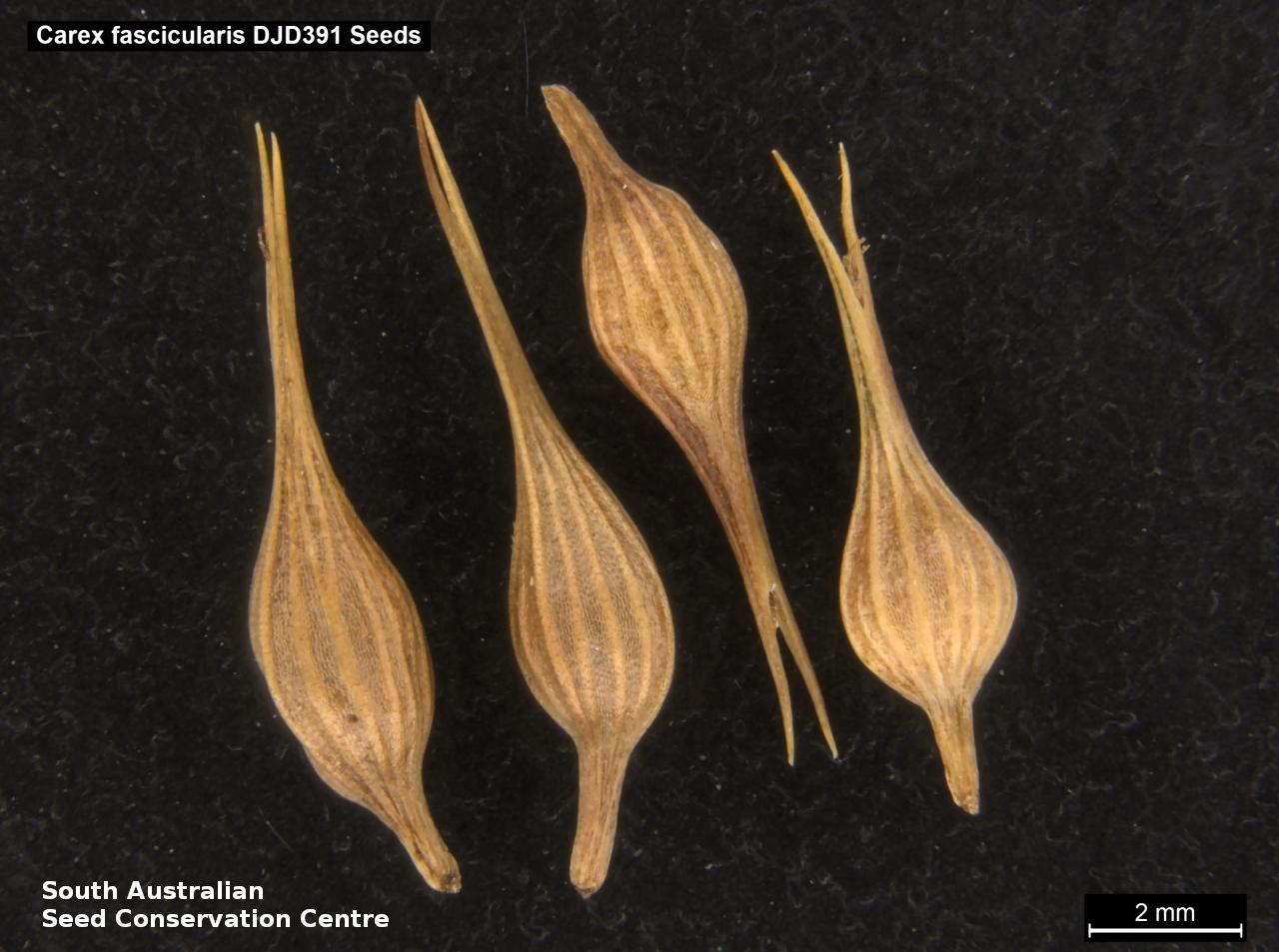

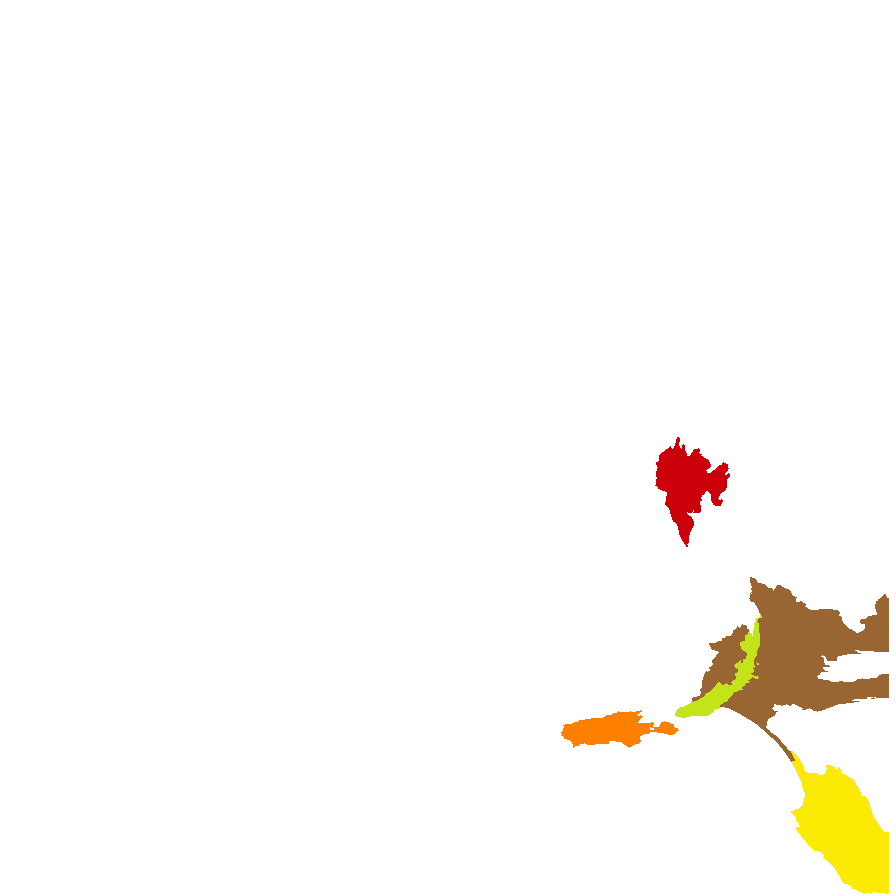
Botanical art
Prior names
Carex pseudocyperus
Etymology
Carex is the classical Latin name for sedge, perhaps from 'carere' meaning to be absent, as the upper spikes are staminate (male) and do not produce seeds. May have been used by Virgil for plants in this genus and derives from ancient Greek 'keiro' meaning to cut, referring to the sharp edge of leaf margins. Fascicularis means clustered or grouped together in bundles, referring to the structure of the inflorescence.
Distribution and status
Found mainly in the Mount Lofty Ranges, Kangaroo Island and the lower South-east in South Australia growing in wet places. Also found in all States. Native. Uncommon in South Australia. Rare in Northern Territory. Uncommon in Western Australia and Queensland. Common in the other States.
Herbarium regions: Northern Lofty, Murray, Southern Lofty, Kangaroo Island, South Eastern, Green Adelaide
NRM regions: Adelaide and Mount Lofty Ranges, Kangaroo Island, South Australian Murray-Darling Basin, South East
AVH map: SA distribution map (external link)
Plant description
Perennial sedge with stems to over 50 cm high, acutely triquetrous, scabrous on the margins. Leaves nearly as long as stem, to 8 mm broad. Bracts leafy, much exceeding the inflorescence, with scarcely any or no sheaths. Flower-spikes 3-6, pedunculate, drooping, all close together at the top of the stem, cylindrical, 3-6 cm long, the terminal one male, the others female; glumes with scabrid awns. Flowering between October and April. Fruits are pale brown, clusters of drooping heads, each containing numerous individual fruit. Seeds are brown ellipsoid nut to 3 mm long and 2 mm wide, covered by a striated papery layer (utricle) with a long narrow forked tail. Seed embryo type is capitate.
Seed collection and propagation
Collect seeds between December and May. Collect fruits either by running your hands along the heads; mature seeds will come-off easily or cut whole heads that are brown, containing dark hard seeds. Place the heads in a tray and leave to dry for one to two weeks. Then rub the heads with a rubber bung to dislodge the seeds. Use a sieve to separate any unwanted material. Store the seeds with a desiccant such as dried silica beads or dry rice, in an air tight container in a cool and dry place. Seed viability is usually high.
| Location | No. of seeds (weight grams) | Number of plants | Date collected | Collection number Collection location | Date stored | % Viability | Storage temperature |
|---|---|---|---|---|---|---|---|
| BGA | 18,800 (28.79 g) | 50+ | 28-Apr-2004 | DJD4 Southern Lofty | 1-Sep-2004 | N/C | +5°C, -18°C |
| BGA MSB | 17,800 (24.65 g) 17,800 (24.65 g) | 40 | 15-Feb-2006 | DJD391 South Eastern | 28-Jul-2006 | 100% | -18°C |
| BGA | 54,000 (70.23 g) | 1-Jan-2007 | RJB71063 Southern Lofty | 1-Aug-2007 | 100% | -18°C | |
| BGA MSB | 4,350 (5.41 g) 4,350 (5.41 g) | 5-Feb-2007 | RLT1152 Southern Lofty | 1-Aug-2007 | 85% | -18°C | |
| BGA | 14,000 (13.05 g) | 2-Feb-2010 | Clayton Southern Lofty | 1-Jan-2016 | 90% | -18°C |
Number of plants: This is the number of plants from which the seeds were collected.
Collection location: The Herbarium of South Australia's region name.
% Viability: Percentage of filled healthy seeds determined by a cut test or x-ray.